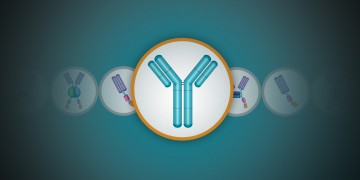
Rapid Advances in Biotechnology Bring Questions about Patentability
Striking a balance between encouraging innovation and allowing access to knowledge is not simple. Allowing patents for modifications of naturally occurring organisms and cells pose a particular challenge to the scientific community. Adding to the complexity is the variations in regulations between countries. This article discusses these issues with specific examples in biotechnology and biomedical fields.

Expanding Flow Core Capabilities by Shifting Routine Sorts to Self-Sort on the S3e™ Cell Sorter
To run a core flow cytometry lab is no easy task. There is always a balance between running simple sorts and developing new assays for answering complicated questions that demand pushing the limits of existing assays and the limitations of the sorters. See how Andy Riddell, a flow core manager, pushes the limits of his existing assays and how Bio-Rad’s S3e™ cell sorter is allowing him to accomplish that.

Using PrimePCR™ Gene Expression Assays to Understand Breast Cancer Metastasis
Tumor metastasis is a complex process. It requires the ability of the cancer cells to invade their surroundings and travel to distant sites and survive. Dr. Traci Lyons studies the mechanism of COX-2 functioning in the metastasis of breast cancer cells. Find out how Dr. Lyons used Bio-Rad’s PrimePCR™ Assays to confirm COX-2 knockdown at the mRNA level.

New Product Feature: gDNA-Free cDNA in Two Simple Steps
Removing genomic DNA contamination from cDNA preparations is a challenge. All currently available methods are time consuming, could lead to sample loss, and are not efficient. Bio-Rad’s iScript™gDNA Clear cDNA Synthesis Kit tackles these issues and makes this step effortless. This article presents the performance data of the kit and describes how simple and efficient it is to use the kit for gDNA removal.

Design for Learning: Developing Curricula for Instructional Lab Kits
How are educational curricula developed? Who sets the standards? How do companies that develop science education kits keep up with this and design their kits around the curricula? Find out in this article.

What Academic Researchers Can Learn from Small Biotechs about Antibody Validation
Academic labs don’t have the money to do full-scale validations of antibodies. What tricks can small biotechs teach them about validation? Find out.

Trends in Antibody Generation Techniques — the Fully Synthetic Human Combinatorial Antibody Library (HuCAL®) Technology
From using nonspecific polyclonal antibodies to developing monoclonal antibodies from immortalized antibody-producing cells to antibody engineering and generation of antibodies using an animal-free library with billions of antibody fragments to choose from, the antibody technology has seen tremendous advances. Explore where this journey started and what the current trends are and what the human combinatorial antibody library (HuCAL) technology destination has to offer!

CRISPR: The Hopes, the Fears, and the Biology
Few discoveries have changed the pace of discovery and the types of questions we can ask as drastically and quickly as CRISPR-based genome editing. But where did CRISPR come from? How was it adapted to become such a game-changing genome editing tool? And why are some of its greatest proponents alarmed?

The Youth Factor: It’s in Your Blood
Finding ways to slow or reverse aging intrigues scientists and non-scientists alike. In recent studies, merging the circulatory systems of young and old mice rejuvenated skeletal muscle, brain, and cardiac cells, indicating the presence of a systemic “anti-aging factor” initially thought to be growth differentiation factor 11 (GDF11). However, a recent publication showed that GDF11 actually promotes aging, emphasizing the need for further integrative analysis of the aging process.

Next Generation Computers: Transforming Cells into Autonomous Computing Devices
What do computers and cells have in common? Can cells function as computers or recording devices? Can a bacterial computer be built? Synthetic biologists have recently developed a platform called SCRIBE (Synthetic Cellular Recorders Integrating Biological Events) to convert genomic DNA into a “tape” for recording and memorizing information. This article explores many interesting aspects of autonomous cellular memory and the potential applications of such living computational systems.
